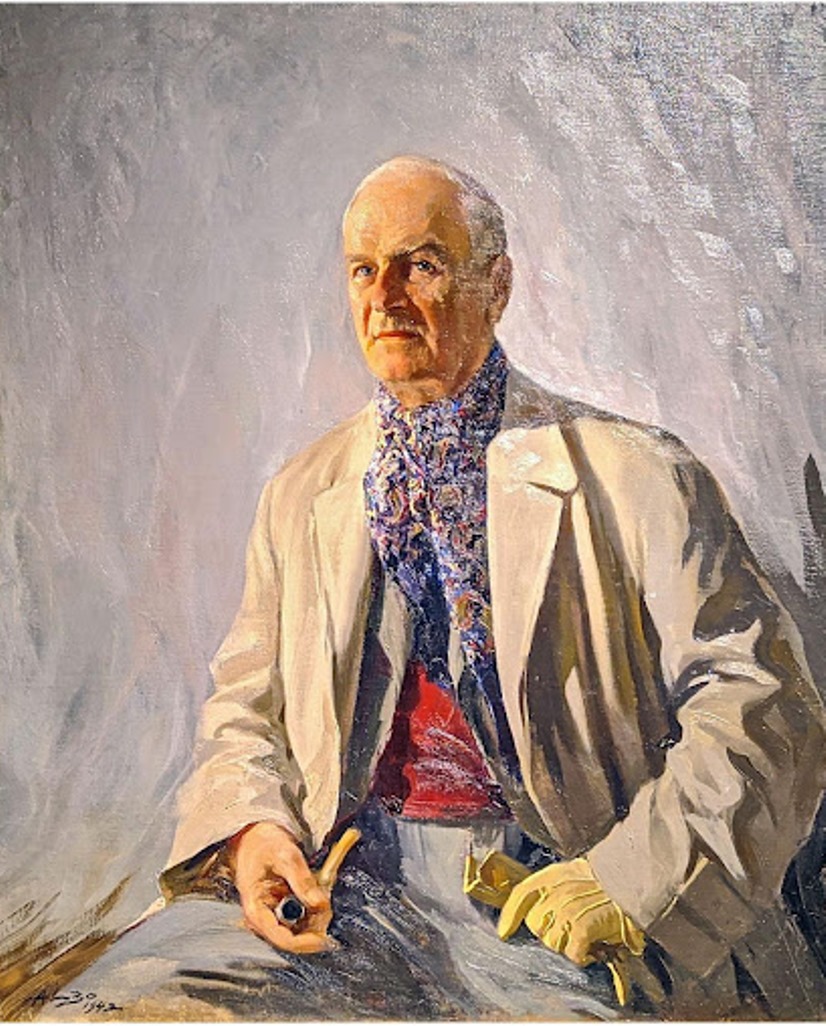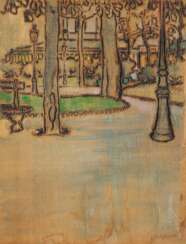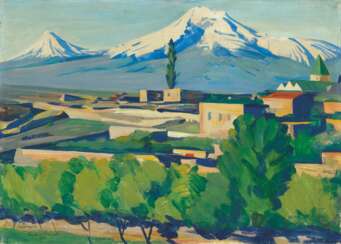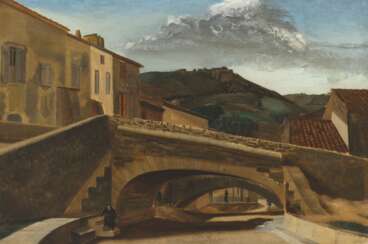
Paintings — Russian Art

Ivan Konstantinovich Aivazovsky (Russian: Иван Константинович Айвазовский) was a Russian-Armenian painter, celebrated for his mastery in depicting seascapes. Born in 1817 in Feodosia, Crimea, Aivazovsky became one of the most renowned Russian artists of his time, with a career spanning over 60 years during which he created more than 6,000 paintings. His work is characterized by a profound understanding of the play of light on water, capturing the essence of the sea like no other artist of his era.
Aivazovsky's paintings stand out for their dramatic intensity and the emotional depth they evoke. He was particularly adept at illustrating the sea's many moods, from calm, serene waters to tumultuous storms. His ability to depict light, whether it be the tranquil glow of the moon on the water's surface or the fierce blaze of the sun setting over the ocean, was unparalleled. Among his most celebrated works are "The Ninth Wave" and "Among the Waves," both of which showcase his skill in portraying the sea's power and beauty. These masterpieces can be found in prestigious museums and galleries worldwide, including the State Russian Museum in Saint Petersburg and the Tretyakov Gallery in Moscow.
For collectors and experts in the realms of art and antiques, Aivazovsky's oeuvre represents a pinnacle of romantic landscape painting. His works are not only aesthetically magnificent but also embody a rich cultural and historical narrative, making them highly sought after in the art market. If you are passionate about the fusion of culture, art, and history embodied in painting, Ivan Konstantinovich Aivazovsky's works are a testament to the enduring allure of the sea and its many faces.
To stay informed about new product sales and auction events related to Ivan Konstantinovich Aivazovsky, we invite you to sign up for our updates. This subscription ensures you're always in the know about opportunities to add a piece of this legendary artist's legacy to your collection.

George Dawe was an English portrait artist, celebrated for his depictions of Russian military leaders. Born in 1781 in London, Dawe was a prodigy in engraving under his father's tutelage before shifting his focus to painting. He gained recognition at the Royal Academy of Arts and became a member in 1814.
Dawe's career reached international prominence when he moved to Saint Petersburg in 1819, following a commission from Tsar Alexander I. There, he created over 300 portraits for the Military Gallery at the Winter Palace, capturing the visages of Russia's elite during Napoleon's invasion. His works, praised for their historical value and artistic merit, are still displayed in the Hermitage Museum today.
Despite his death in 1829, Dawe's legacy persists, particularly in Russia, where he is regarded as a key figure in military portraiture. His works remain a significant part of cultural exhibitions and continue to attract scholars and art enthusiasts.
If you're fascinated by the rich history of art and the stories behind iconic portraits, consider signing up for updates on George Dawe. Stay informed about new sales and auction events that feature his masterful works. Your subscription will keep you connected to the world of historical art and its vibrant market.

Ivan Pavlovich Pokhitonov (Russian: Иван Павлович Похитонов) was a Russian artist of the late 19th and early 20th centuries. He is known as a painter and graphic artist, a master of landscape, who lived and worked in Europe for much of his career.
Ivan Pokhitonov created mainly miniature landscapes, made with a small brush on planks of red or lemon wood, treated and primed with a special technology. He worked mostly in plein air. The most common motif of his miniature paintings during the years of emigration were city and seascapes of France. In his works, always built on a combination of the finest shades of color, the artist organically combined the techniques of Barbizon, of which he was a fan, and the traditions of the Russian landscape school. He also turned to the genre of still life and portraiture.

Aleksei Alekseevich Kharlamov (russian: Алексей Алексеевич Харламов) was a Russian artist renowned for his portrait paintings. Born in 1840 in Saratov, Russia, Kharlamov displayed artistic talent from an early age, eventually studying under the guidance of Professor A. T. Markov at the Imperial Academy of Arts. His dedication to art was rewarded with several medals during his academic years, and his piece titled "Baptism of Kiev" earned him a prestigious gold medal in 1866.
Kharlamov spent much of his career in Paris, where he was deeply influenced by Western European artistic movements. His works often featured delicate and finely detailed representations of women and children, capturing the subtleties of expression and mood which became his signature style. Notably, his painting "Young Woman and Child" from 1894 showcases his adept use of light and texture to portray serene domestic scenes, a piece that is currently held in the Bowdoin College Museum of Art.
Throughout his career, Kharlamov was associated with prominent cultural figures such as the novelist Ivan Turgenev, and he participated actively in the Parisian art scene. His portraits were highly sought after, with clients paying substantial sums for his works, reflecting his status as a distinguished portraitist of his time.
For those interested in exploring the works of Aleksei Alekseevich Kharlamov and the rich cultural tapestry of his era, signing up for updates on auctions and events featuring his art can provide valuable insights and opportunities to acquire pieces by this notable artist. Stay informed about the latest sales and exhibitions by subscribing to our newsletter dedicated to Kharlamov’s legacy.

Konstantin Alekseyevich Korovin (Russian: Константи́н Алексе́евич Коро́вин) was a Russian artist and stage designer, renowned for his pivotal role in the transition from Russian Realism to Impressionism. Born in Moscow in 1861, Korovin's artistic journey began at the Moscow School of Painting, Sculpture, and Architecture, where he was heavily influenced by his mentor, Alexei Savrasov. His early work reflected the Realist tradition, but his style evolved after exposure to the vibrant art scenes of Paris and the influence of French Impressionists.
Korovin's contribution to art is marked by his vibrant palette and dynamic brushwork, capturing the transient effects of light and color with a spontaneity that was novel to Russian painting at the time. His works, ranging from lush landscapes and intimate still lifes to vivid portraits, showcase his mastery in evoking mood and atmosphere. Notably, his paintings of the Russian North and scenes of Parisian life have been celebrated for their lively, atmospheric qualities and are held in high esteem in museums and galleries worldwide, including the Tretyakov Gallery in Moscow and the Russian Museum in Saint Petersburg.
Beyond painting, Korovin's legacy includes significant contributions to theater design, where his innovative use of color and lighting brought new dimensions to stage productions in Russia, collaborating closely with the Moscow Art Theatre. His scenic designs for operas and ballets are credited with revolutionizing the visual aspect of Russian theater, making him a pivotal figure in both the visual and performing arts.
For collectors and experts in art and antiques, Korovin's works represent a unique blend of Russian tradition and Western artistic movements, making them highly sought after. His ability to capture the essence of a moment, whether in the tranquil Russian countryside or the bustling streets of Paris, continues to captivate audiences and scholars alike.
To stay informed on new sales and auction events featuring works by Konstantin Alekseyevich Korovin, sign up for our updates. This subscription ensures you're the first to know about valuable opportunities to add to your collection, focusing exclusively on Korovin's art and related events.

Valentin Alexandrovich Serov (Russian: Валентин Александрович Серов) was a preeminent Russian artist, renowned for his contributions to painting and his role in bridging the transition between Russian realism and impressionism. Born into the vibrant cultural milieu of 19th-century Russia, Serov's artistic genius was evident from an early age, mentored by the likes of Ilya Repin and later influenced by the works of the French Impressionists. His specialization in portraiture, alongside ventures into historical and landscape painting, showcased not only his versatility but also his profound ability to capture the essence of his subjects.
Serov's body of work is distinguished by its dynamic expression, innovative use of color, and the emotional depth he imbued in his portraits. One of his most celebrated works, "The Girl with Peaches" (1887), stands as a testament to his mastery of light and shadow, heralding the nuances of impressionistic sensibility in Russian art. His portraits of notable figures, such as the composer Alexander Sergeyevich Pushkin and the philanthropist Pavel Tretyakov, have earned him a distinguished place in art galleries and museums worldwide, including the Tretyakov Gallery in Moscow and the Russian Museum in Saint Petersburg.
His influence extends beyond the canvas, contributing significantly to the cultural tapestry of his time. Serov's dedication to capturing the spirit of his era, combined with his technical prowess, has left an indelible mark on the world of art, making his works highly sought after by collectors and art enthusiasts alike. For those keen on the intricacies of cultural evolution through art, Serov's legacy offers a rich field of study and appreciation.
For collectors and experts in art and antiques, Serov's works represent not just aesthetic beauty but also a significant cultural and historical investment. We invite you to sign up for updates on new product sales and auction events related to Valentin Alexandrovich Serov, ensuring you stay informed on opportunities to own a piece of this monumental artist's legacy. This subscription is your gateway to exclusive insights into the world of art collecting, tailored specifically to enthusiasts of Serov's unparalleled contributions to art and culture.

Martiros Saryan (Russian: Мартирос Сергеевич Сарьян), an Armenian painter, left an indelible mark on the art world with his vibrant landscapes, still lifes, and portraits that radiate the essence of Armenian culture and nature. Born in Nakhichevan-on-Don in 1880, Saryan's journey into the world of art was influenced by his studies at the Moscow School of Arts and notable artists like Paul Gauguin and Henri Matisse. His work is celebrated for its bright, bold use of color and a unique ability to capture the beauty of the Armenian landscape.
Saryan's artistic odyssey was marked by extensive travels across Turkey, Egypt, and Iran between 1910 and 1913, which enriched his palette and broadened his thematic scope. These experiences, coupled with his later contributions as a designer of the Armenian SSR's coat of arms and a theatre curtain, underscore his profound impact on Armenian national identity. Despite the challenges of the 1930s, Saryan's commitment to landscape and portrait painting never wavered, earning him prestigious awards and recognition within the USSR Art Academy and the Armenian Academy of Sciences.
Today, Saryan's legacy is preserved at the Martiros Saryan House Museum in Yerevan, where visitors can immerse themselves in his life and art. The museum showcases a wealth of his works, including renowned paintings like "Armenia" and "The Ararat Valley," offering a window into the culture and history of Armenia through Saryan's eyes.
For collectors and experts in art and antiques, the vibrancy and depth of Saryan's work offer a unique insight into Armenian heritage. Sign up for updates on new product sales and auction events related to Martiros Saryan, and explore the rich tapestry of Armenian art as seen through the masterful strokes of one of its greatest painters.

Robert Rafailovich Falk (Russian: Роберт Рафаилович Фальк) was a prominent Russian and Soviet avant-garde painter, born in Moscow in 1886. He is celebrated for his innovative contributions to the Jack of Diamonds group, emphasizing expressive volume and angular, saturated color spots in his works. Falk's artistic journey began at the Moscow School of Painting, Sculpture and Architecture, where he studied under notable artists like Konstantin Korovin and Valentin Serov, and further honed his skills in the studios of Konstantin Yuon and Ilya Mashkov.
Falk's style evolved significantly over his career, initially influenced by Paul Cézanne's approach to painting, which emphasized the sculptural form through the layering of paint. His early works are characterized by bright, contrasting colors and expressive contours, capturing physical and tangible elements in landscapes and still lifes. Falk's unique approach also involved a significant degree of form deformation to enhance emotional expressiveness, a technique that set his work apart from his contemporaries.
After spending a decade in Paris from 1928 to 1938, Falk's work underwent a transformation, favoring more subtle and holistic representations. This period was marked by a focus on the rich, musical qualities of color and light, which he applied to both landscapes and portraits. Upon his return to Moscow, Falk found himself increasingly isolated within the Soviet art scene, yet he continued to produce work that resonated with emotional depth and complexity until his death in 1958.
Falk's legacy includes numerous paintings housed in the New Tretyakov Art Museum in Moscow, demonstrating his lasting influence on both Russian and French modern art traditions. Collectors and art enthusiasts are invited to explore the nuanced and evocative works of Robert Rafailovich Falk, a bridge between early 20th-century modernism and the avant-garde movements that followed. Sign up for updates on new product sales and auction events related to Falk to deepen your appreciation and understanding of this pioneering artist's contributions.

Vasily Ivanovich Shukhaev (Russian: Василий Иванович Шухаев) was a multifaceted Russian and Soviet artist, celebrated for his expertise as a painter, graphic artist, stage designer, and teacher. Born in Moscow in 1887, Shukhaev's artistic journey began at the Imperial Stroganov School of Industrial Art, where he was under the tutelage of prominent artists like K. A. Korovin and I. I. Nivinsky. His education continued at the St. Petersburg Academy of Arts, which paved the way for his diverse and influential career. Shukhaev's body of work is vast, encompassing hundreds of paintings, drawings, theater sketches, book illustrations, and monumental works, showcasing a deep engagement with genre paintings, still lifes, landscapes, and portraits.
Shukhaev's legacy includes a significant period of creativity and teaching in Paris in the early 20th century, after leaving Russia post-October Revolution. His Parisian phase was marked by innovative book illustrations for renowned literary works by Pushkin, Gogol, Dostoevsky, and others, demonstrating his unique ability to blend literary themes with visual artistry. Notably, his illustrations for Pushkin's "Queen of Spades" and "Boris Godunov" stood out for their stylistic nod to vintage prints and the emblematic use of symbols.
His art has been celebrated in various international exhibitions and is held in high regard by collectors and museums alike. Works such as "The Reigning Monarchs of the World" (1934), a group caricature published in Vanity Fair, reflect Shukhaev's versatile style and ability to capture the essence of his subjects with a mix of reverence and subtle critique.
For art collectors and enthusiasts interested in Russian and Soviet art, Vasily Ivanovich Shukhaev's oeuvre represents a bridge between classical traditions and modern artistic expressions. His work continues to captivate audiences with its historical depth, technical brilliance, and emotive power.
If you're keen on exploring more about Vasily Ivanovich Shukhaev's works or wish to stay updated on sales and auction events featuring his art, signing up for updates is a step towards immersing yourself in the rich tapestry of Russian art history.

Vasily Ivanovich Shukhaev (Russian: Василий Иванович Шухаев) was a multifaceted Russian and Soviet artist, celebrated for his expertise as a painter, graphic artist, stage designer, and teacher. Born in Moscow in 1887, Shukhaev's artistic journey began at the Imperial Stroganov School of Industrial Art, where he was under the tutelage of prominent artists like K. A. Korovin and I. I. Nivinsky. His education continued at the St. Petersburg Academy of Arts, which paved the way for his diverse and influential career. Shukhaev's body of work is vast, encompassing hundreds of paintings, drawings, theater sketches, book illustrations, and monumental works, showcasing a deep engagement with genre paintings, still lifes, landscapes, and portraits.
Shukhaev's legacy includes a significant period of creativity and teaching in Paris in the early 20th century, after leaving Russia post-October Revolution. His Parisian phase was marked by innovative book illustrations for renowned literary works by Pushkin, Gogol, Dostoevsky, and others, demonstrating his unique ability to blend literary themes with visual artistry. Notably, his illustrations for Pushkin's "Queen of Spades" and "Boris Godunov" stood out for their stylistic nod to vintage prints and the emblematic use of symbols.
His art has been celebrated in various international exhibitions and is held in high regard by collectors and museums alike. Works such as "The Reigning Monarchs of the World" (1934), a group caricature published in Vanity Fair, reflect Shukhaev's versatile style and ability to capture the essence of his subjects with a mix of reverence and subtle critique.
For art collectors and enthusiasts interested in Russian and Soviet art, Vasily Ivanovich Shukhaev's oeuvre represents a bridge between classical traditions and modern artistic expressions. His work continues to captivate audiences with its historical depth, technical brilliance, and emotive power.
If you're keen on exploring more about Vasily Ivanovich Shukhaev's works or wish to stay updated on sales and auction events featuring his art, signing up for updates is a step towards immersing yourself in the rich tapestry of Russian art history.





























































